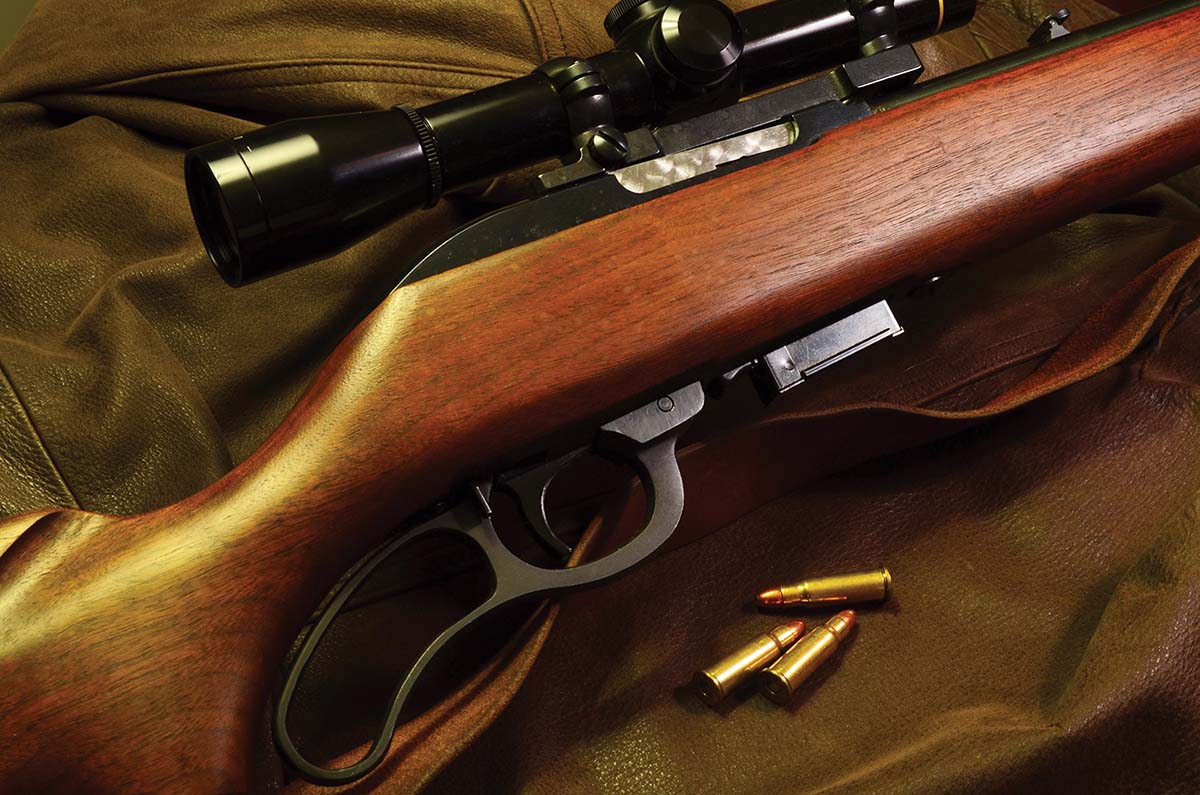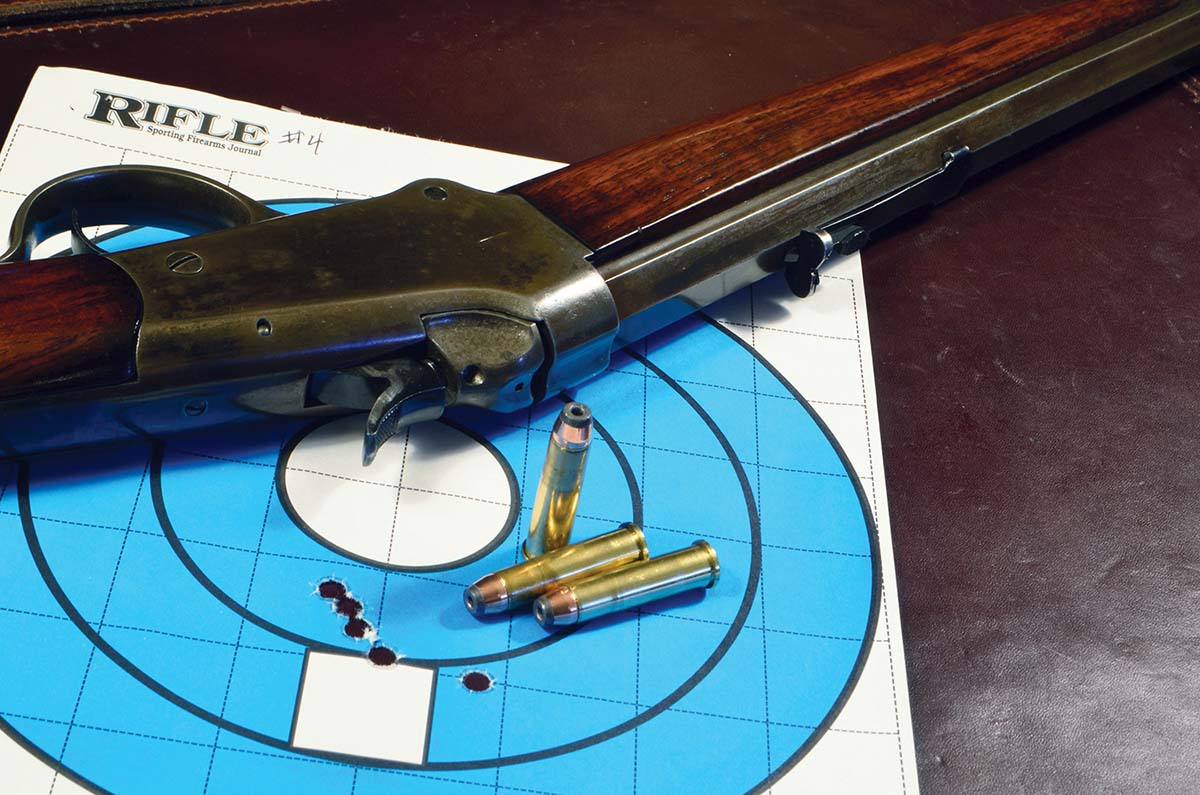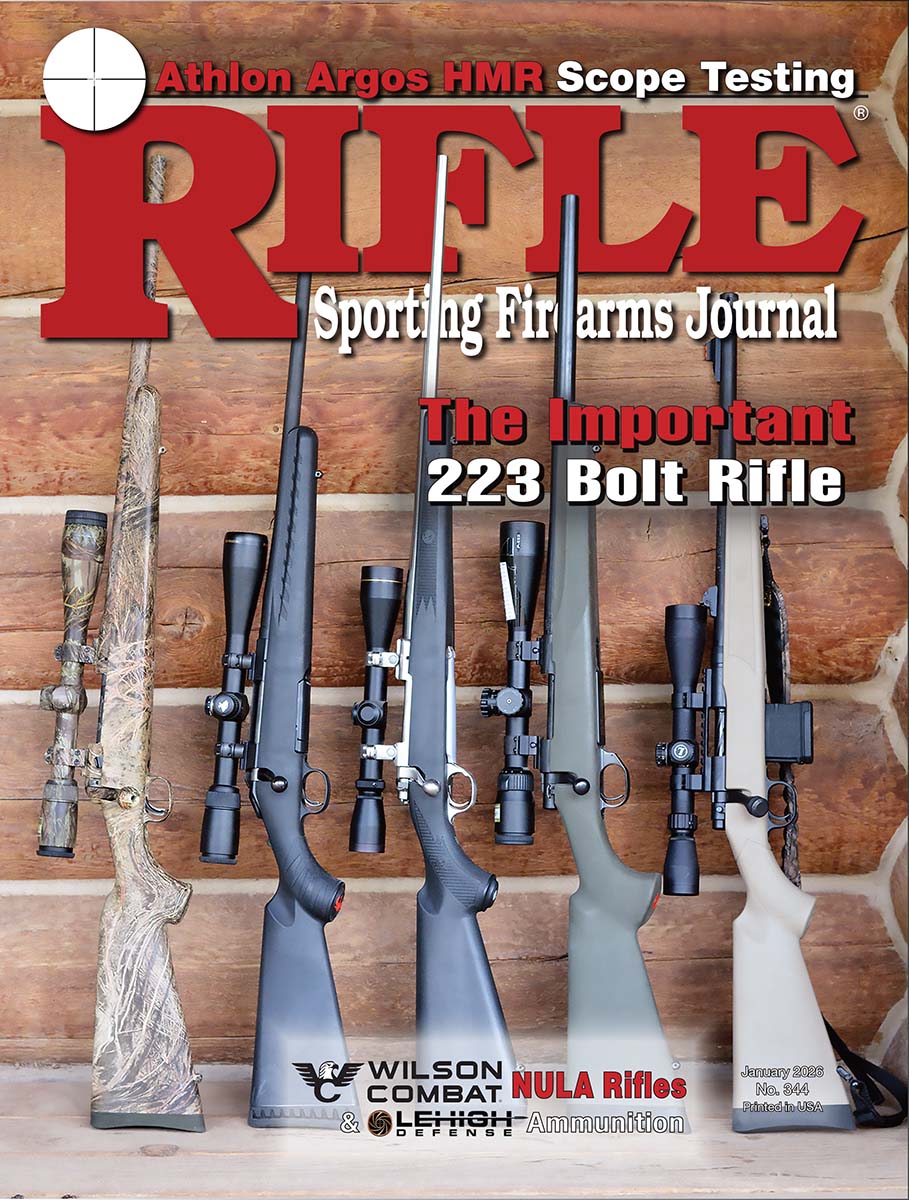Walnut Hill
Thinking Small
column By: Terry Wieland | January, 26

The term “small-game rifle” hardly figures in the literature anymore. It is almost as passé as old-time Schützen and turkey shoots in the fall, at least among the mainstream. Even those of us who revel in the past and revere the masterpieces of nineteenth-century gunmakers generally give the whole genre a short shrift.
The small-game rifle is a direct descendant of the muzzle-loading squirrel rifle of times past, which was miserly with lead, frugal with gunpowder, and deadly when you hit them right.
What are we talking about here? The game in question includes (but is not limited to) rabbits, squirrels, possums, raccoons, armadillos, some birds such as wild turkeys where legal and even foxes. Some are edible, some not; some are considered pests or varmints, others are protected, with designated seasons.
Suitable rifles need to be powerful enough to deal with a larger animal, such as a fox, yet have the capacity to fire a bullet at medium velocity that will not blow up on impact and destroy a lot of meat. In other words, the gun should be sufficiently deadly but not unduly destructive.
This rules out what we now consider a varmint rifle, which is characterized by high velocity, highly frangible bullets, and killing capability out to four or five hundred yards. To say nothing of a heavy barrel and a scope suitable for exploring the moons of Jupiter.
In terms of range, a small-game rifle generally operates inside 125 yards, which means a scope is neither needed nor, by and large, wanted. Putting a scope on a rifle makes it awkward to carry, and the ideal rifle should be as easy and comfortable to carry as a walking stick. In the past, I have written about walking-around rifles, and there is considerable overlap. For wandering in wild country, not knowing what you might see or want to shoot, I would consider anything up to 44 Magnum or 32-40, whereas for small game I would draw the line at the old 32-20 and comparable cartridges.
If I had to pick one cartridge from the past that is ideal, it would be Winchester’s 25 WCF, a.k.a. 25-20. When factory loaded, it fired a flat-nosed 86-grain bullet at about 1,600 feet per second (fps). Traditionally, it used flat-nosed bullets because it originated in lever-action rifles with tubular magazines, but in a single-shot, one can use anything.
In Britain, the rook-and-rabbit rifle was a small-game number – nothing more, nothing less. There, cartridges ranged from 25 caliber up to about 38 caliber, with bullets weighing from 60 to 120 grains, and all at velocities around 1,500 fps. Both rooks and rabbits were shot for food, “four and twenty black birds, baked in a pie,” so destructiveness was kept to a minimum. Also, when shooting at rooks on a tree branch, hunters were launching the bullet into the air and wanted to keep ranges as short as possible.
In Britain as well as here, small-game cartridges were largely killed off by the 22 Long Rifle (LR). The 22 LR combined most of the virtues while adding low cost and wide availability. Rifle manufacturers, ever anxious to streamline production processes, pounced on the 22 LR as a godsend. Not only was the ammunition cheap by comparison, rifles could be cheaper and less robust, yet still function acceptably well.
One by one, older, smaller cartridges fell by the wayside. By 1960, about all that was left were the 22 Hornet (which also qualified as a lower-rank varmint number), 25-20 and 32-20. In a world of noisy varmint blasters where high velocity was king, the Hornet survived because it was not noisy and presented less of a long-range threat than the 220 Swift and its ilk. Dispatching a raccoon in suburbia with a Hornet was acceptable; nailing it with a Swift was not.
Around that same year, Winchester and Marlin combined to provide an object lesson on this trend. Simultaneously, it seemed, cartridge designers at Winchester and Remington decided the rimmed 357 Magnum case could be necked down to provide any number of useful variants. Remington designed the 22 Jet; Winchester, the 256 Winchester Magnum; and Marlin began to chamber both in its new Model 62 Levermatic.
The Levermatic was a modern-looking, short-throw lever rifle introduced in 1956 in 22 Long Rifle, with the 22 Magnum added in 1959 and centerfires in 1962. At least one was produced in 22 Jet, although its whereabouts are unknown; some 8,000 were made in 256 Winchester Magnum, and the 30 Carbine was added a few years later.
The 256 fired a 60-grain flatnose bullet at 2,800 fps, which was certainly a cut above the 25-20’s 86 grains at 1,500 fps, but the designers at Marlin built in a number of problems. Due to the size of the action, they were limited as to overall cartridge length. This extended to the clip magazine, whose length handcuffs what you can do as a handloader – use a bullet that is too long, which is virtually any spitzer or any bullet more than 75 grains, and you do not have enough powder capacity to do much.
This limitation got a lot of press and contributed to the collective yawn with which the shooting community greeted the Levermatic in 256.
The 60-grain bullet at full bore is certainly effective, and I have a partly dismantled armadillo to prove it, but it is not what you want if you intend to shoot for food. Fortunately, you can load it down. Hornady’s 60-grain jacketed flatnose is, as far as I can see, the only jacketed bullet available for the 256, and it works beautifully in the 25-20 as well. Long may it survive. It seems to be part of Hornady’s corporate mission to keep older rifles shooting, and few though they be, the Levermatic certainly deserves to live on.
The bright side of the Levermatic’s cartridge-length limitation is that with an 86-grain cast bullet and the resulting low velocity, the 256 Winchester Magnum becomes a good small-game round. Even so, I do not consider the Levermatic an ideal small-game rifle. For one thing, it wears a scope, and that makes it awkward to carry. The only alternative is factory open sights on the barrel, which are rather crude. Altogether, it does not add up.

At Rock Island in August, there was a Winchester Model 1885 Low Wall in 25-20 single shot that made my mouth water, but by the time it came on the block, I had already overspent my budget. It was set up not quite as a Schützen rifle, although it did have a tang sight, a long octagonal barrel and a globe front sight.
The 25-20 single shot is a great small-game cartridge, ballistically comparable to the later 25-20 Winchester, but it presents considerable difficulties in handloading, due mainly to a dearth of brass. I did not get it.
My point is that if I had to choose one action to bring back as ideal for our purposes, it would be the 1885 Low Wall, and I would offer it in 22 Long Rifle, 22 Hornet, 25-20, 32-20 and maybe 357 Magnum. What the hell. Let us throw caution to the wind and offer three barrel lengths (26, 28, 30 inches), two grades (standard and deluxe, the latter having nicer wood and some simple but tasteful American scroll engraving), octagonal barrels optional, a set trigger and a variety of sighting arrangements. It will not, however (repeat: not), have provision for a scope.
So far, we have been concentrating on supply, or the lack thereof. What about demand?
The harsh truth is that if there were a demand, there would be a supply. Unlike a century ago, more people today live in urban areas than outside, and opportunities for small-game hunting are severely limited. Public tolerance for gunshots in the distance is not what it used to be. For hunting of any kind, most of us have to travel, and who is going to travel very far to shoot at possums and armadillos?
Still, for the odd rampaging raccoon, a 25-20 or 32-20 is fun to keep around, and even more fun if you take it to the range and shoot steel plates. The noise is low, recoil almost nonexistent, and if you want to wear your coonskin cap, no one will complain. By today’s standards, that is not weird at all.


